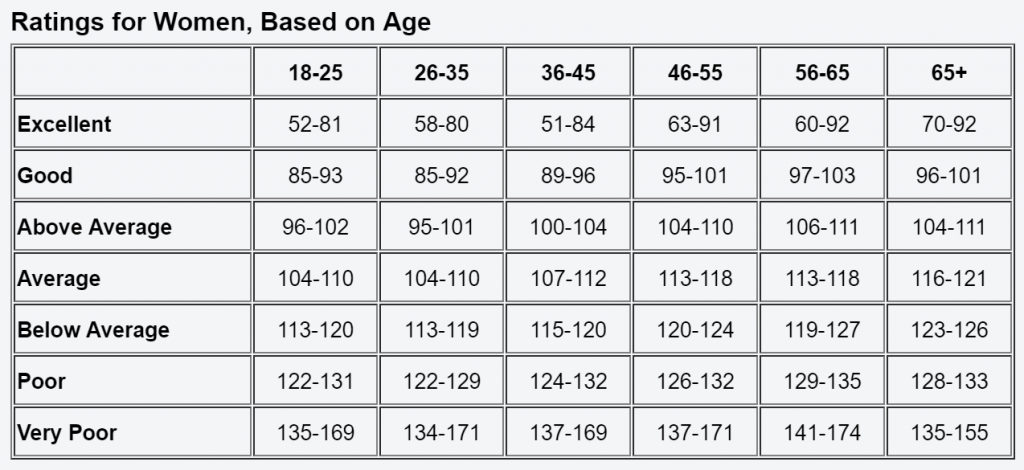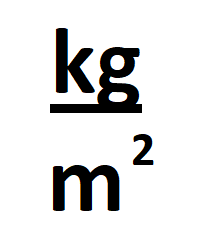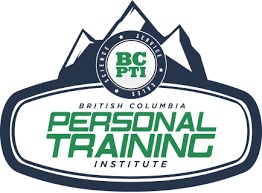When we teach our PTA Global Personal Trainer Certification, one of the tools we want to arm our students with is different types of fitness assessments. These can empower trainers and their clients to know what exists, how it scores against human standards, where to focus efforts and set appropriate goals and how to drive programming. So, as you get ready to tackle 2019, consider doing a few assessments to see where you’re starting from and to be able to measure your progress as you go! Keep in mind that there are LOTS of different ways to measure what’s going on – it’s not all about the scale. In this blog I’ll offer physiology, composition, movement, performance and psychology assessments so you can pick which ones seem like the best fit for tracking you!
Physiology
Blood Pressure
Blood pressure is a common medical assessment for overall cardiovascular health. Next time you’re at the drug store there should be a station where you can sit and check your blood pressure. Normal is considered 120/80 whereas hypertension (high blood pressure) is above 140/110. This is a great test to do before you start a fitness program to ensure you’re safe to increase intensity. If you have high blood pressure we recommend checking in with your doctor before you start to exercise.
Pulse
Checking your pulse is a simple way to get a read on your cardiovascular fitness and stress levels. I have 2 favorite pulse tests.
- Resting Heart Rate – before you get out of bed in the morning (but after you’ve calmed down from the abrupt shock of your alarm going off!) take your morning resting heart rate. The easiest way to find your pulse is to take your 2nd and 3rd finger and place them gently below your jaw bone on the right side of your throat. Count the beats for 1 minute. A common, healthy resting heart rate for adults would be in the 60s (although highly trained athletes can be as low as 40.) If you don’t get a good nights’ sleep, if you have a high-stress lifestyle with minimal stress management techniques or if you are not recovering from high-intensity or high-volume workouts, you’ll notice that your resting heart rate might be high or might increase over time.
- YMCA Step Test – this is a heart rate test that measures how you recover after a mild cardiovascular exertion. You’ll need a step 12” high and a metronome set to 96 (there’s a couple free apps that can do this for you; or download Lauryn Hill’s “Everything is Everything” and step along to the beat!) Step up-up-down-down at the tempo for 3 minutes. Then, at the end of the test, take your pulse for 1 minute. You’re measuring your heart rate as you recover from the exercise. Here’s the chart you need to assess your cardiovascular ability.


Composition
BMI
This is a medical standard for assessing heaviness. Here’s the formula:

Now here’s the chart to plot your answer:
| <20 underweight |
| 20-25 healthy weight (21-23 is ideal) |
| 25-30 overweight |
| 30-35 level 1 obesity |
| 35-40 level 2 obesity |
| 40+ morbidly obese |
Waist to Hip Ratio
BMI is the medical standard for assessing weight but while it is a universal predictor of early morbidity, it doesn’t account for individuals with higher lean body mass (like fitness enthusiasts and athletes!) So, a great additional measurement to take is your waist to hip ratio. Use a tape measure on the circumference of your waist (lines up with your belly button) and your hip (line it up with the thickest part of your glutes.) Divide the waist measurement by the hip measurement.
| WHR | Low | < Average | Average | > Average | High |
| Male | <0.85 | 0.85–0.89 | 0.9–0.94 | 0.95–0.99 | >0.99 |
| Female | <0.75 | 0.75–0.70 | 0.8–0.84 | 0.85–0.89 | >0.89 |
Bioelectrical Impedance
All Steve Nash clubs have a special type of scale that measures bioelectrical impedance to provide body composition information (ie. hydration, body fat and muscle mass.) These machines offer additional information beyond a scale that offers only a measurement of your weight. An electric current passes through your body (you don’t feel anything!) and measures electrical conductivity. The current moves faster through lean body mass or water and moves more slowly through body fat. The machine then applies an equation to estimate body fat (including your age, gender, weight and height.) Personal Trainers can help you get this reading done and provide some insight about the results sheets. Here are a few things you can do to get the most accurate reading possible:
- No food for 4 hours (food in your stomach gets read as fat)
- No exercise for 24 hours (do the measurement before your workout)
- No alcohol for 48 hours (alcohol is dehydrating)
- No diuretic medication for 7 days
- Standardize your timing (same time/same day per week and for females, same week of your cycle)
Discrepancies between measurements can occur because of changes in hydration, positioning on the machine, gut contents, medication, core temperature, room temperature and the equipment needing calibration. Additional considerations are your muscularity and proportionality (ie. long torso, short legs, somatotype, etc.)
Movement
Overhead Squat
The overhead squat is the king of movement assessments because it’s a total body mobility and stability functional assessment. Because of how myofascial lines affect movement in the body, dysfunctions show up at various joints in the body and cause predictable movement errors across all exercise and sport. We used the overhead squat in every Goal Assessment and client intake. So, the easiest way to get this assessment done is to ask the Fitness Manager at your closest SNFC club to recommend a trainer who can help you with this – if you haven’t had a chance to do a Goal Assessment, pre-2019 would be a great time to do it! You’ll be asked to do a bodyweight overhead squat for 10 to 15 reps and the trainer will assess your form and movement from front, side and back. We can identify particular movement errors and educate you about the probably overactive and underactive muscles that could then be mobilized or strengthened to help you move better!
- TRX Maps – a few of our partner’s locations have a really cool Overhead Squat option from our functional training partners at TRX. TRX Maps performs a complete body movement assessment in 30 seconds. Results are delivered on-screen and via email with targeted exercise plans that address areas of weakness.
Performance

There’s LOADS of ways to measure your performance! Check out this blog for some standards.
https://blog.snclubs.com/6-foundation-exercises-to-build-up-your-baseline-fitness-abilities
Psychology
There’s no denying that psychology plays a big role in fitness: What’s your workout style? What motivates you? Making and sticking to your New Year’s Resolution. One of my favourite assessments that I’ve come across is Christian Thibaudeau’s Neuro Typing. It helps you find which of 3 types you are in terms of why you train: novelty seeker, reward seeker or harm avoider. There is some interesting recommendations for the kind of training you’re best suited for depending on your type. This doesn’t mean you can’t train outside of your type, but if you’ve found it hard to stay motivated and you’re been training outside of your type, switching to something that matches might be more enjoyable and easier to stick with! (check it out here: https://www.t-nation.com/training/nonstop-natural-gains-the-neuro-typing-system)
Using the first few weeks of January to get your mind right for the year ahead is a great way to set yourself up for success! Reflect on what you’ve accomplished in 2018 (or where you fell short.) Set smart goals for what you want to accomplish in a new year of fitness. Pick some of these assessments to set your starting point and/or see what might be worth working on. We always say, “failing to plan is planning to fail” so if you like the ideas presented here but need some help getting started, don’t hesitate to connect with our team!
Blog By: Logan Dube, BCPTI Lead Educator
Copyright: 2019, BCPTI





